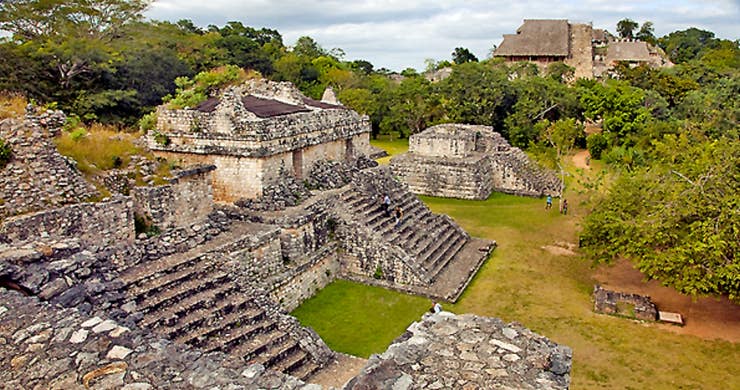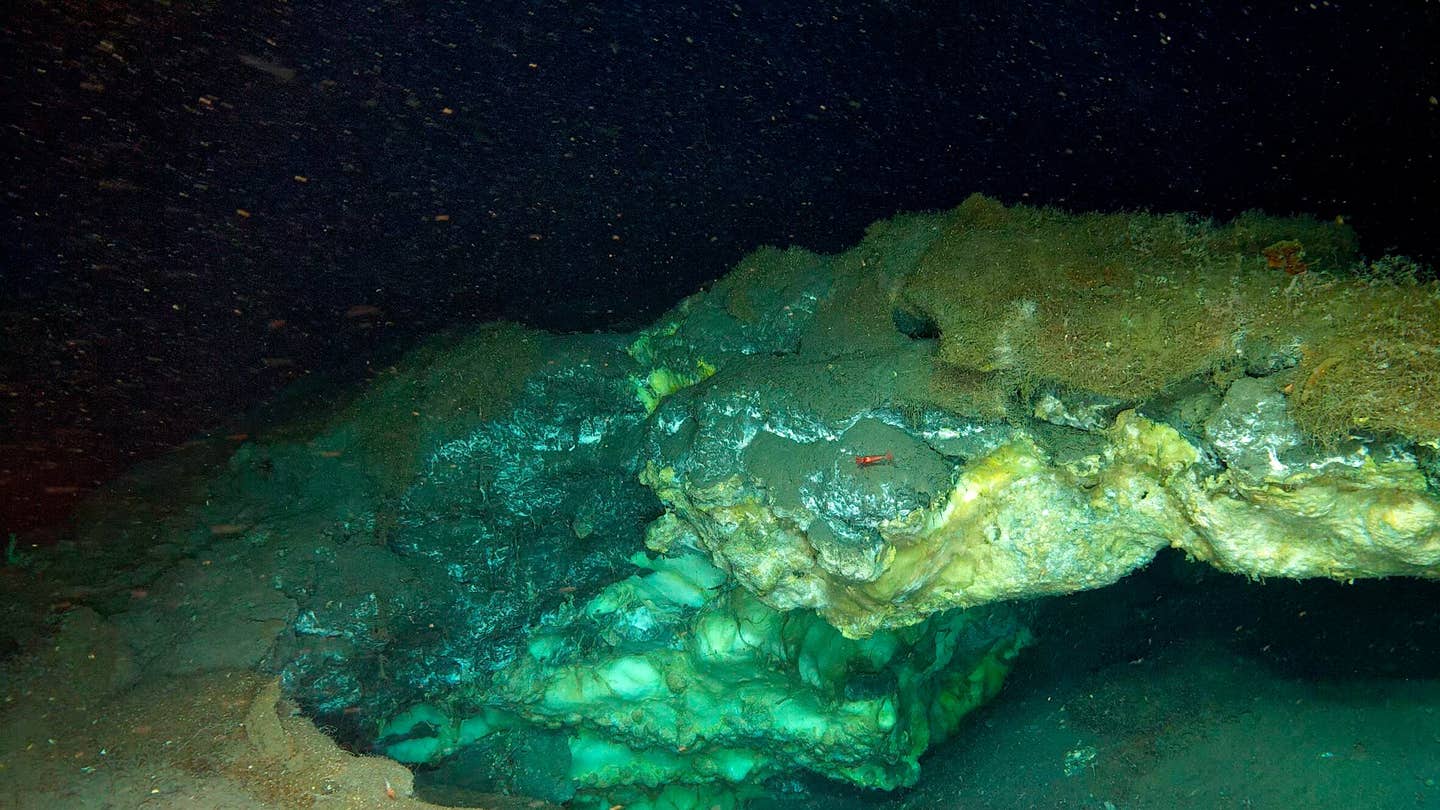Major discovery explains why the ancient Mayan civilization collapsed
The Mayan civilization reached its peak during the Classic Period (250–900 CE) but began to decline in the following centuries

The role of climate change in the collapse of Classic Maya civilization is somewhat controversial, partly because previous records are limited. (CREDIT: Creative Commons)
The Maya civilization, one of the most advanced in Mesoamerican history, thrived from around 2000 BCE until the Spanish conquest in the 16th century. Centered in present-day Mexico, Guatemala, Belize, Honduras, and El Salvador, the Maya developed sophisticated cities, like Tikal and Chichen Itza, with impressive stone pyramids, palaces, and observatories.
The Maya were skilled in astronomy, mathematics, and writing. They created a complex calendar system, accurately predicting solar and lunar events, and used a hieroglyphic script to record history, religion, and daily life on stone monuments and codices.
Mayan society was hierarchical, ruled by kings who claimed divine connection, and its economy relied on agriculture, particularly the cultivation of maize. The civilization reached its peak during the Classic Period (250–900 CE) but began to decline in the following centuries possibly due to environmental stress, warfare, and political instability.
According to this breakthrough research, drought severity during the collapse of the Maya civilization about 1,000 years ago has been measured, offering more evidence to understand the downfall of this ancient society.
Nick Evans, a PhD student in Cambridge’s Department of Earth Sciences and the paper’s first author, mentioned, “The role of climate change in the collapse of Classic Maya civilization is somewhat controversial, partly because previous records are limited to qualitative reconstructions.” This implies that previous research lacked quantitative data.
Related Stories
Researchers from the University of Cambridge and the University of Florida conducted the study at Lake Chichancanab in Mexico’s Yucatán Peninsula, where the Maya civilization flourished. They used a novel method to measure different isotopes of water trapped in gypsum, a mineral formed during droughts when water levels drop.
Their findings, published in the journal Science, indicate a significant decrease in annual precipitation by 41% to 54% compared to present-day levels during the Maya civilization’s collapse. Moreover, peak drought conditions saw reductions of up to 70% in rainfall, along with a decline in relative humidity by 2% to 7%.
Evans noted the study’s significance, saying, “Our study represents a substantial advance as it provides statistically robust estimates of rainfall and humidity levels during the Maya downfall.”
The Classic Maya civilization spanned from 250 CE to 800 CE, characterized by monumental architecture, intellectual achievements, and city-state growth.
However, during the 9th century, a political collapse occurred, leading to the abandonment of limestone cities and the end of dynasties, although the Maya people continued to exist, albeit with diminished political and economic power.
Various theories exist regarding the causes of the Maya collapse, including invasion, war, environmental degradation, and disrupted trade routes. However, climate records from the period suggest a correlation with an extended drought, as evidenced by Professor David Hodell's research in 1995.
Hodell and his team applied a new method to estimate the extent of this drought by analyzing the isotopes of water trapped within gypsum from Lake Chichancanab. This method allowed them to reconstruct hydrological conditions during the Maya collapse period.
The researchers measured oxygen and hydrogen isotopes within the gypsum's crystal structure, reflecting changes in rainfall and relative humidity between 800 and 1000 CE. Evans likened this method to "measuring the water itself," emphasizing its accuracy.
During droughts, lakes like Chichancanab experience increased evaporation, causing heavier isotopes to dominate the water composition. By analyzing the isotopic composition within each layer of gypsum, the researchers constructed a model to estimate past changes in rainfall and humidity.
This quantitative climate data could help predict how droughts affected Maya agriculture, particularly the yields of staple crops like maize.
The research received support from the European Research Council, showcasing the collaborative efforts of institutions in unraveling the mysteries surrounding the collapse of the Maya civilization.
Major accomplishments of the ancient Mayan civilization
The ancient Mayan civilization, flourishing from around 2000 BCE to 1500 CE in Mesoamerica, is renowned for numerous major accomplishments in various fields, including:
1. Astronomy and Calendrical Systems
The Maya developed one of the most accurate calendars of the ancient world, including the 365-day Haab solar calendar and the 260-day Tzolk'in ritual calendar. They tracked celestial bodies such as the sun, moon, and planets, which were central to their agriculture, rituals, and daily life. Their complex understanding of astronomical cycles was used to predict solar eclipses and plan religious festivals.
2. Mathematics
The Maya were one of the first civilizations to use the concept of zero, an essential component for their advanced number system. They used a vigesimal (base-20) system, which allowed them to perform complex calculations. Their mathematical knowledge was applied in astronomy, architecture, and timekeeping.
3. Architecture and Urban Planning
The Maya constructed impressive cities with monumental architecture. Their structures, such as the pyramids of Tikal, Palenque, and Chichen Itza, are characterized by elaborate stone carvings, multi-level platforms, and impressive temples. The Temple of Kukulcán at Chichen Itza, for instance, was designed to align with astronomical phenomena like the equinoxes.
4. Hieroglyphic Writing
The Maya developed a sophisticated writing system consisting of hieroglyphs. This system, one of the few fully developed writing forms in pre-Columbian America, was used to record historical events, religious texts, and astronomy on stone monuments, pottery, and codices. Several of these codices survive today and are vital for understanding Mayan culture and history.
5. Agriculture and Environmental Management
Despite the challenges of dense jungles and low soil fertility, the Maya engineered advanced agricultural techniques. They used methods like slash-and-burn agriculture, terracing, and raised fields, enabling them to sustain large populations. They also constructed sophisticated irrigation and water storage systems, including reservoirs and canals, to manage water resources.
6. Art and Sculpture
The Maya produced detailed and vibrant works of art in various mediums, including pottery, stone carvings, and murals. Their art often depicted rulers, gods, and religious rituals. The intricate stone stelae found in Mayan cities served as historical records and artistic expressions of their leaders' achievements.
7. Religion and Rituals
The Maya had a complex polytheistic belief system, and they conducted elaborate religious ceremonies that involved offerings to their gods. Rituals such as human sacrifices were performed to ensure the continued balance between the cosmos and human life. Their religious practices also influenced their architecture and city planning, which often aligned with celestial events.
8. Trade Networks
The Maya established extensive trade networks throughout Mesoamerica, exchanging goods like jade, obsidian, cacao, textiles, and pottery. Their trade routes helped facilitate the spread of cultural practices, ideas, and innovations between various Maya city-states and neighboring civilizations.
The Maya's accomplishments in astronomy, mathematics, writing, and urban development highlight their complex society and its lasting impact on the region. Many of these innovations continue to be studied and admired today for their sophistication and influence on subsequent cultures.
Note: Materials provided above by the The Brighter Side of News. Content may be edited for style and length.
Like these kind of feel good stories? Get the Brighter Side of News' newsletter.



